In Jennifer Egan’s The Candy House, there’s a scene where a character in the near future uploads all her memories to a device known as the Cube. She picks up the object afterwards and realises that “it feels heavier: the weight of her past.”1
I used to think that memories had no weight or mass, that we could pass through this world without accruing a cumbersome past. But as I get older, I begin to feel my memories take on bulk. And even as I walk along old routes, thinking that I leave no trace, I begin to feel the friction of my past journeys tugging at my legs, slowing me down.
I’ve recently returned from two weeks in London, where, as well as exploring some new haunts, I found myself wading through the past in all its viscosity.
I retraced my steps on Hampstead Heath and visited Kenwood House again.2 Unlike Furness Abbey, which I wrote about this summer, the place itself is of limited historical interest. But it’s a well-situated, free art gallery—and a very good one.
One of the features of the art on display were some paintings by Angelica Kauffmann, who was featured in the wonderful Tate exhibition Now You See Us I wrote about this summer. It was a joy to see some of her paintings displayed here in their “natural” habitat, almost like calling on a friend at home for the first time.
The tenderness of her Rinaldo and Armida struck me as particularly beautiful.
I was also delighted to see this intimate work by Joseph Wright of Derby, painted when he was first experimenting with the candlelight that was to become his trademark effect.
Mentally, I compared it to the roaring infernal scene of Vesuvius, which I’d seen a few years ago at a Tate exhibition and which I included here. Both paintings are a celebration of light, but in astonishingly different ways.
This ferrying back and forth in time that I was sensing was made explicit in an intriguing exhibition on display at Kenwood House, featuring the contemporary artist Stephen Farthing’s reaction to some of the old paintings in the building.
I was especially taken with his reworking of the fabulous 17th-century portrait of Lady Cecil by William Larkin (see above). In the original, Lady Cecil’s dress demands to qualify as a historical period in its own right. And just look at that carpet! It seems set on an invasion of the space outside the painting. Today Kenwood House, tomorrow the Heath!
Farthing’s response to Larkin’s painting (below) is appropriately sumptuous. And his creation of a mirror image to “animate” the original scene (which, oddly overlooking the territorial ambitions of the carpet, he called “inert”) is intriguing.
I’ve just come across the term chirality in chemistry, describing molecules that have mirror images, like a left and a right hand, and which have different properties (a tricky thing in pharmaceuticals, as one of the pair may have the effect you want, the other one may be useless or even harmful).
It seemed to me that the chiral pairs in Farthing’s painting are destined for very different futures...Which, in turn, also made me wonder, Is the present just a fraternal twin of the past? Forgive these preoccupations with pairs; they come naturally to one born an identical (chiral?) twin.
The title Farthing gave to his painting, A Dance to the Music of Time, might have been a good one for Egan’s temporally obsessed novel, A Visit from the Goon Squad. The Candy House3 is the sequel to that book, and by coincidence, I’d just read it. But of course, the title was already taken by Anthony Powell’s monumental series of novels.4
Leaving Kenwood House, I saw once more the view of London below, on this occasion slightly smudged in the light drizzle that fell. There was a metal plaque, last updated in 2016, that was intended to guide the viewer to the main landmarks in the city. I counted a number of large, unlovely additions since then. And St. Paul’s Cathedral, which long ago would have dominated this view, peeped apologetically from between the shoulders of taller, much younger relatives. It was not a happy family portrait.
Having visited a landmark new to me, the grave of Karl Marx in Highgate, I meandered over to the South Bank and admired the Thames in the late afternoon gloom. Barges, I thought, as I looked at the dark forms on the river. No, on closer examination, they looked more like pontoons tied together. But their sight hauled back all the memories that were freighted in an essay I wrote earlier this year. And of course, the site of the Palace of Westminster with its clock tower made me delay my crossing of the bridge until I could hear the Westminster Quarters chiming.
In the days that followed, I trudged through the streets of London, occasionally with scenes that seemed out of a Whistler painting, with all the insistent energy of a character out of Dickens.
Along the way, I almost literally bumped into more mirror images—in the form of Anthony Gormley’s twin sculptures, Reflection.
I could equally have been a tramp out of a Beckett story, and indeed later that week I went to see a superb production of his Waiting for Godot, a play I’d first seen in London in the 1980s. I was struggling with memories, just like Krapp in another Beckett play.
The irony was not lost on me. I spent two weeks more or less off Substack and getting on with the rest of my life. But like the streets of the city that were blanketed in the fallen leaves of its countless plane trees, I found myself shuffling through rustling memories—memories that were also scattered, apparently weightlessly, through many of my Substack essays.
It seems publication—on Substack and probably anywhere—does not lighten the load. Why had I expected it to?
In Egan’s The Candy House, after Roxy experiences the weight of her memories in the Cube, “she feels a corresponding lightness, as if she’s been relieved of some internal pressure.”5 On certain days, I can’t help wishing that this part of Egan’s near future was already here.
Page 156. Scribner. Kindle Edition.
The title I have chosen for this essay is supposed to echo “Brideshead Revisited,” Evelyn Waugh’s 1945 novel, which is full of nostalgia, especially for university days. The subtitle is a giveaway: “The Sacred & Profane Memories of Captain Charles Ryder.” Evelyn Waugh went to Hertford College, Oxford. The BBC’s celebrated TV adaptation of the book was broadcast in 1981, the year I went up to Oxford, and watching it, some of us were afflicted by a kind of anticipatory nostalgia. An odd feeling.
One reviewer called The Candy House a “fraternal twin” rather than a sequel.
Powell knew Evelyn Waugh (see note 2) at Oxford, and they both had a house in the county of Somerset in later life. Small world.
Page 156. ibid.





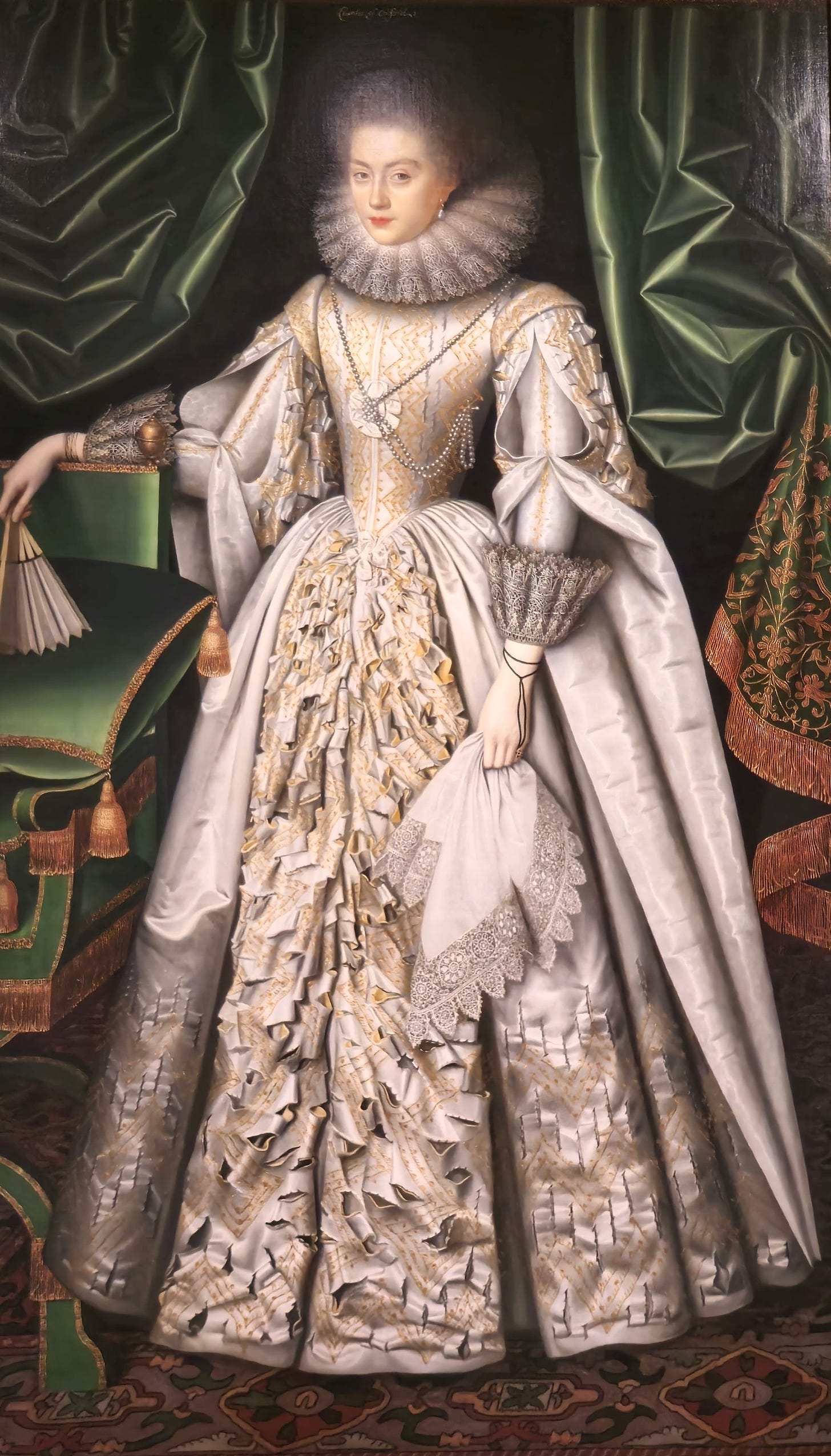
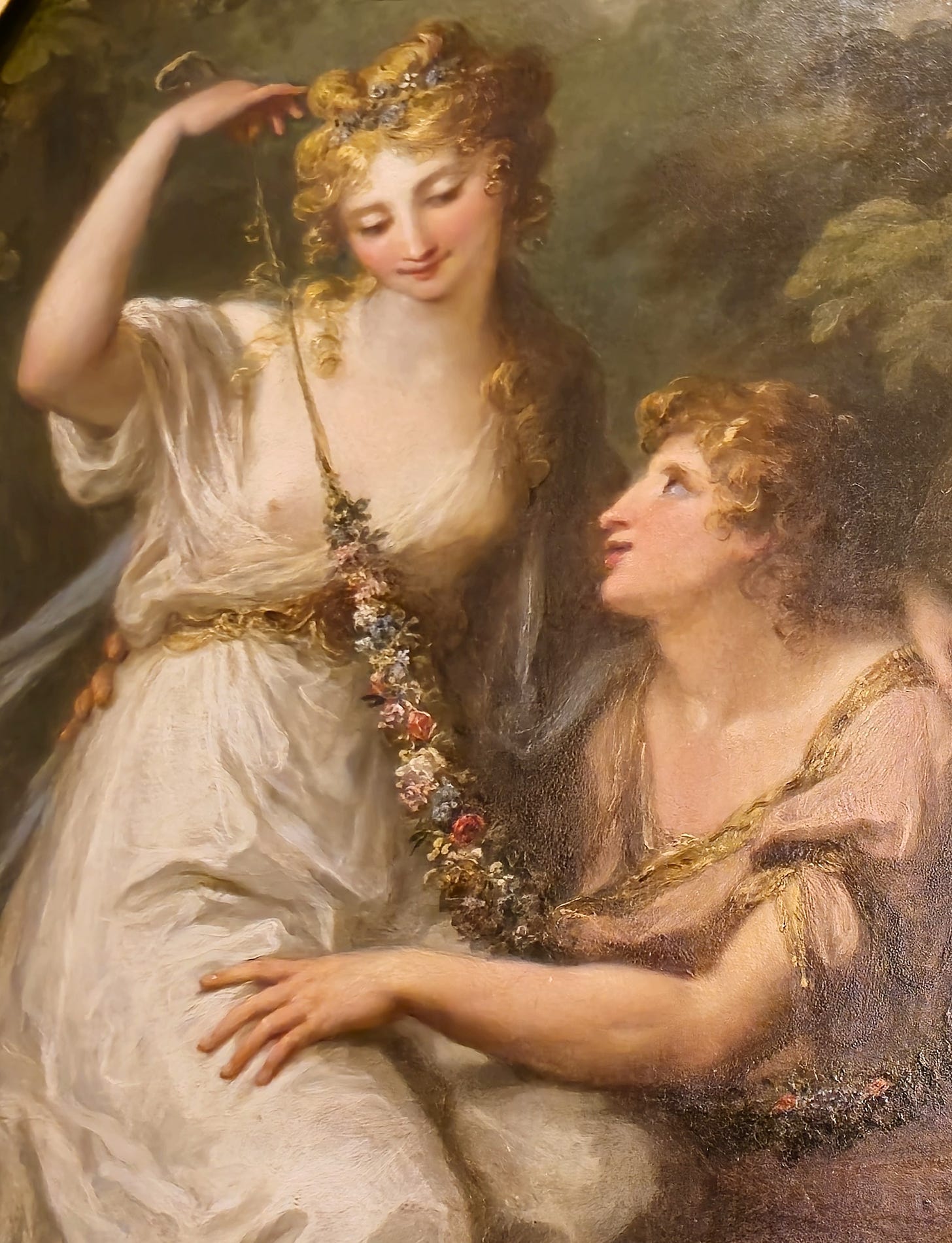
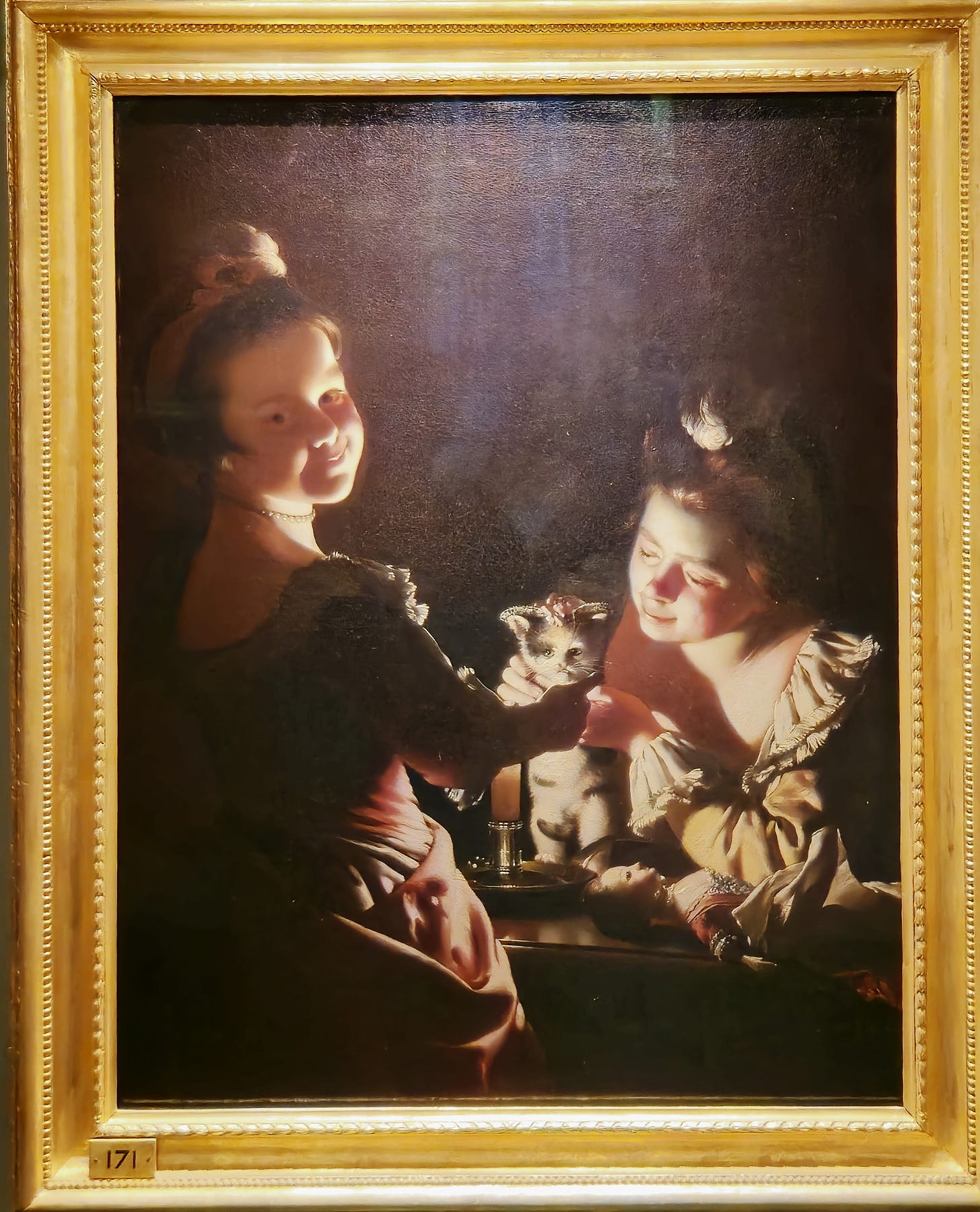
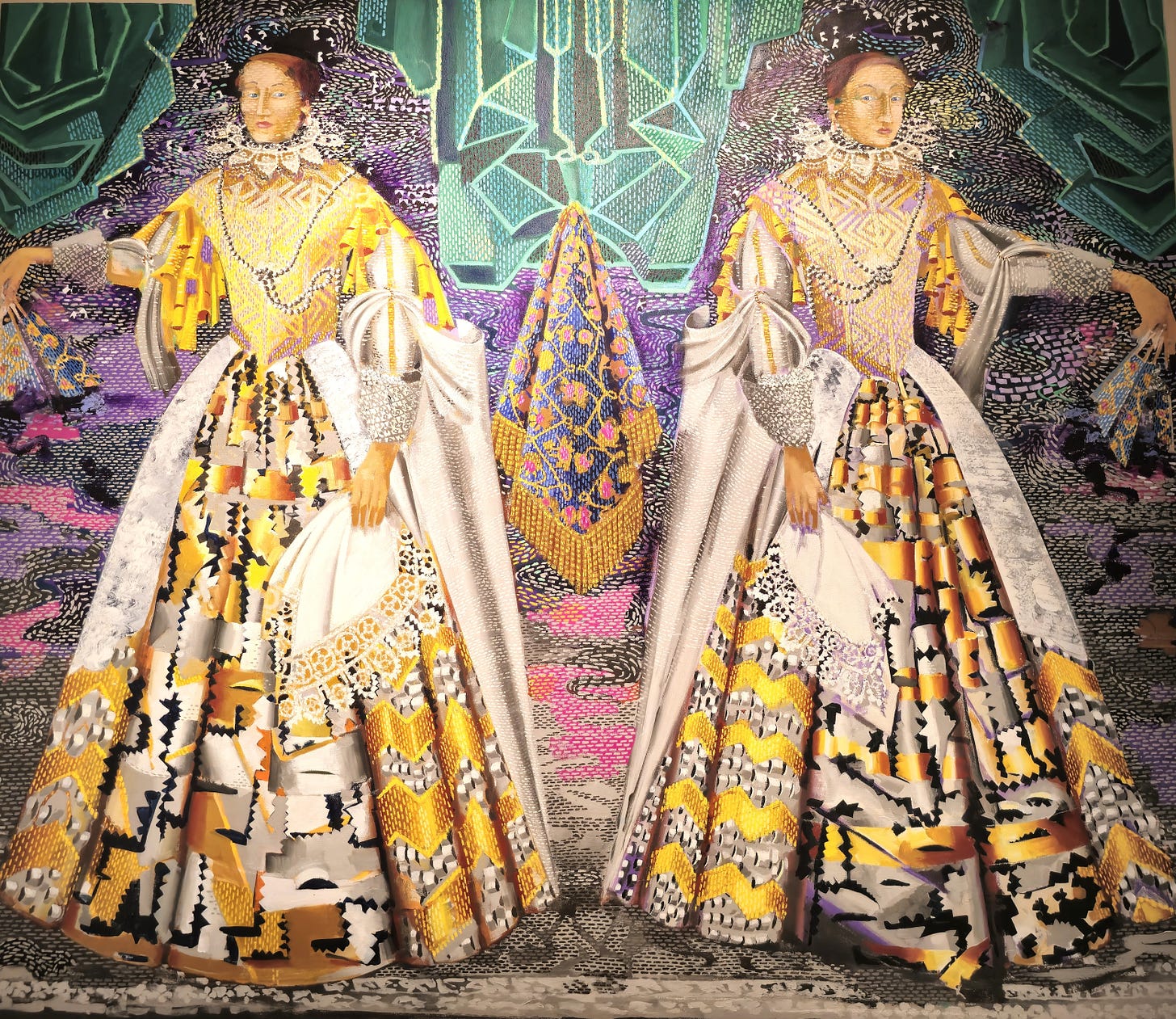
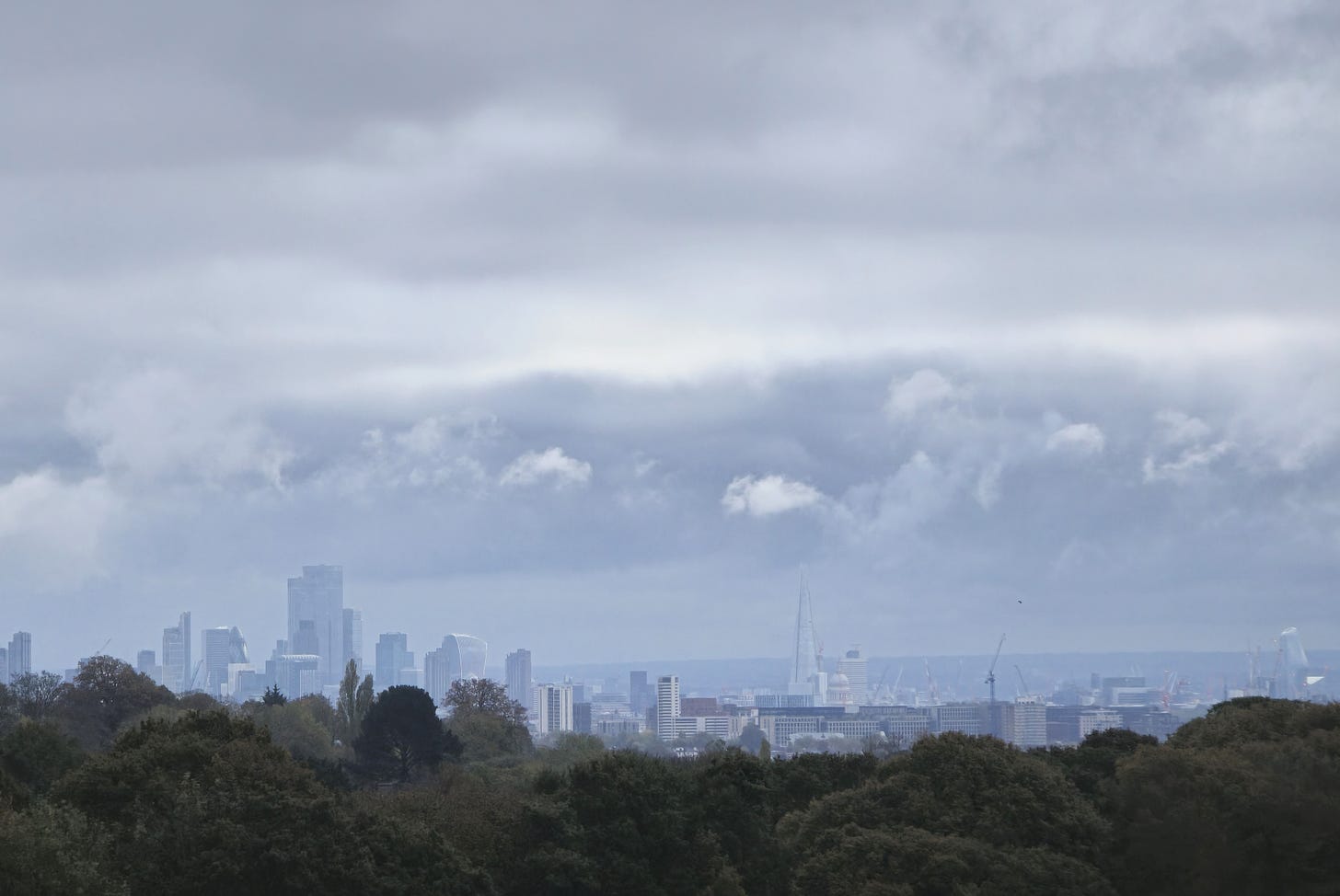
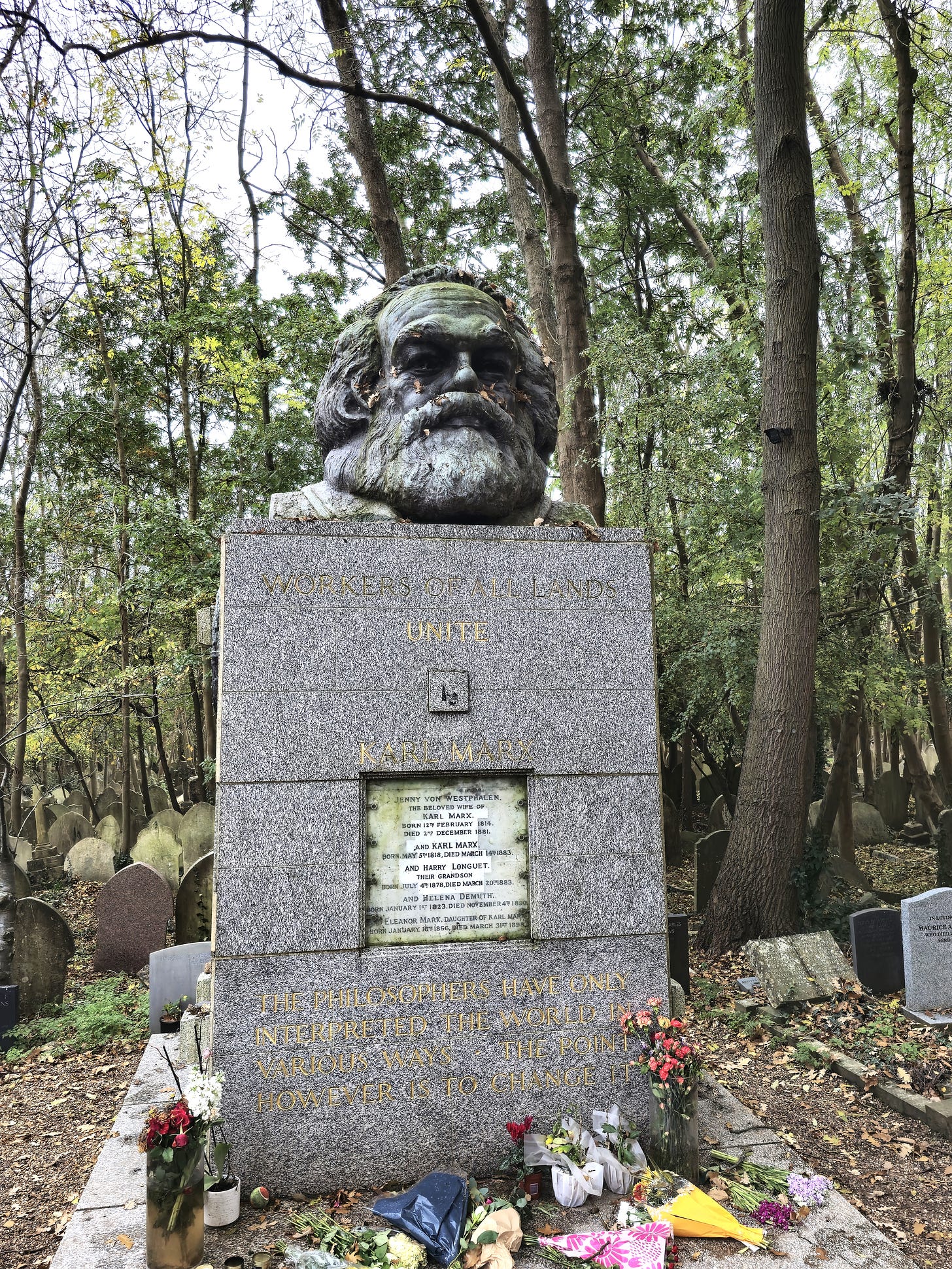
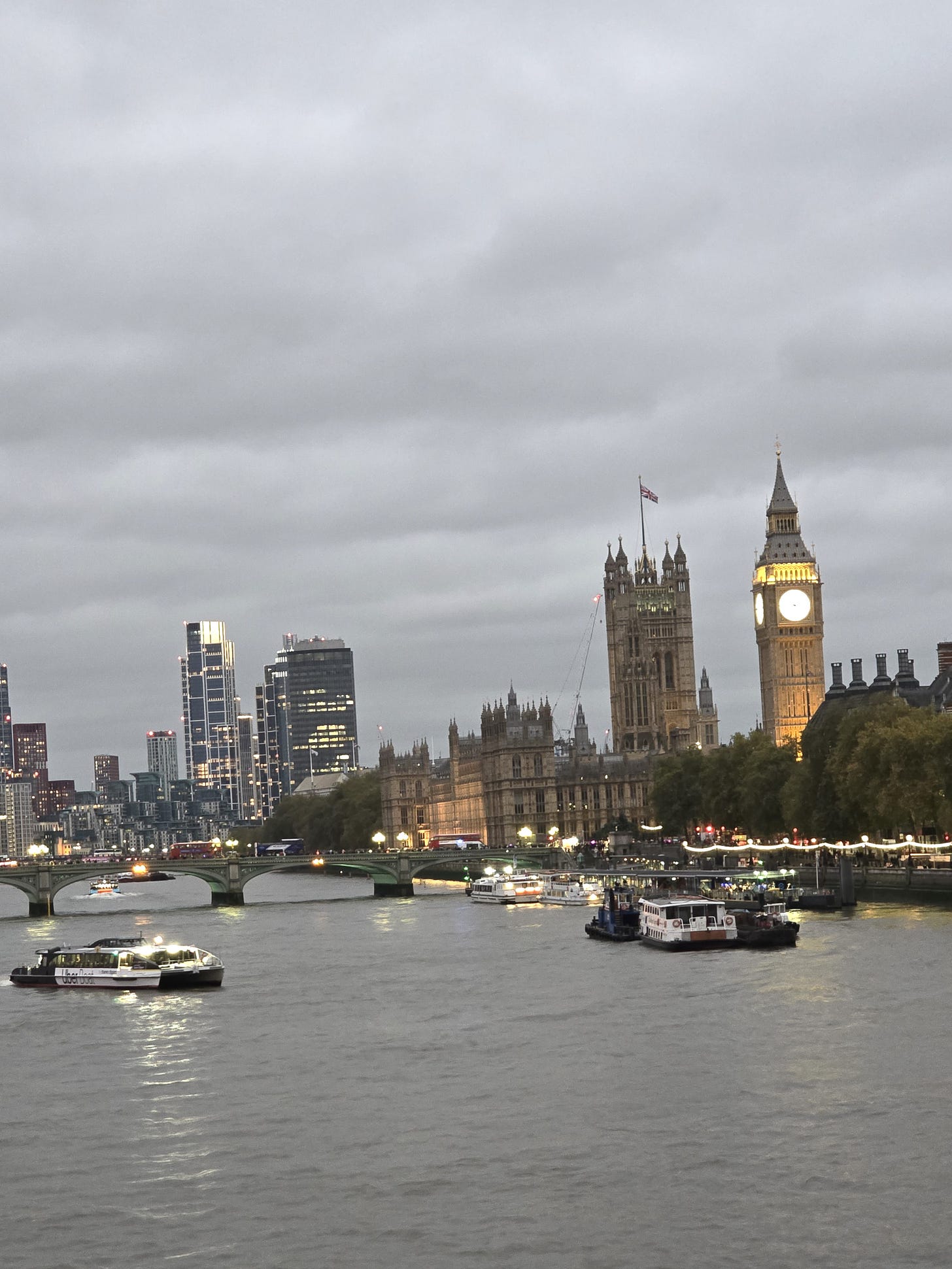
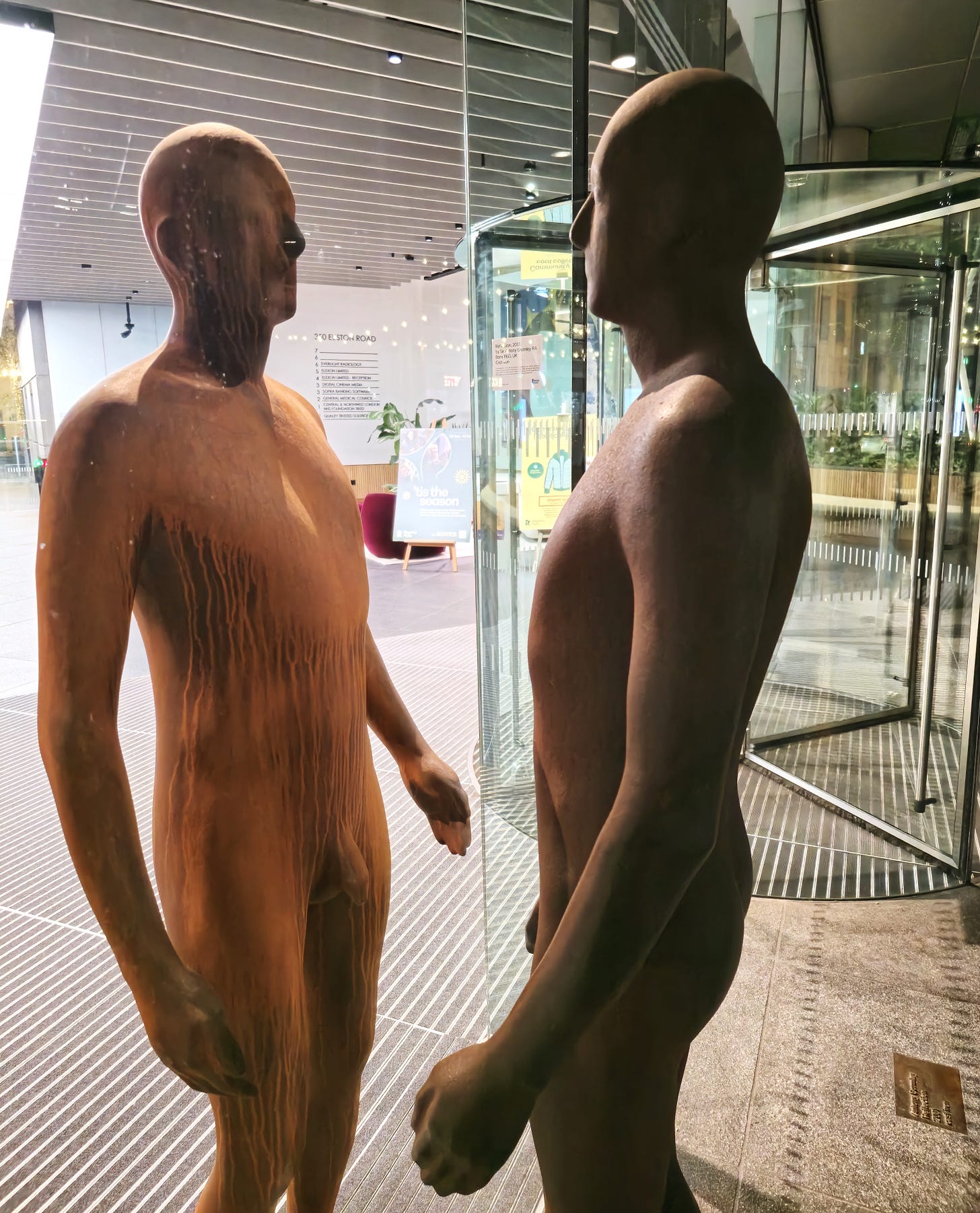
I always enjoy reading your posts more than once. Such an undercurrent of melancholy in this one. Lots of synchronicity too as I had literally just finished reading elsewhere about Gary Oldman starring in Krapp's Last Tape. Not sure if I'm up for Beckett just at the moment! Thank you for this.
Another gorgeous essay, rich with startling details and unforeseen connections and associations. Chirality: the word feels taken from Greek mythology. Maybe it was, and I missed it. Chiron comes to mind: a strange doubling, two creatures in one body.
One thing I love about the portrait of Lady Cecil is the visual - and probably actual - weight of her dress. It seems made out of hammered metal. (Maybe she was, as well). In contrast, the lively textiles surrounding her. The drapes and cushions, the patterned cloth, the carpet. Splendor she could not enjoy, wearing that dress. Talk about “walking through the past in all its viscosity.” I can imagine her contemporary self in Farthing’s painting: on the one hand wanting to stiffen her image for future generations to admire, and on the other just wanting to escape and maybe go dancing.
I thought of Brideshead Revisited as well. Sumptuous and doomed? I loved the series, but the book was more intimate. Chirality, again? And I can definitely see A Visit From the Goon Squad as a fraternal twin of The Candy House. Holding the Cube, uploading your memories, unburdening yourself of the past.
A lovely post. Thank you, Jeffrey.